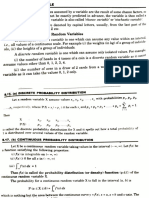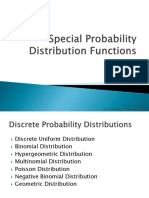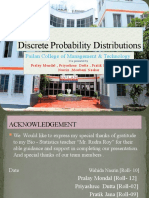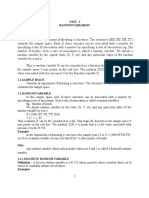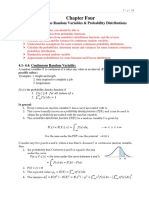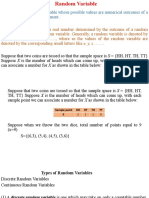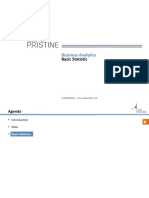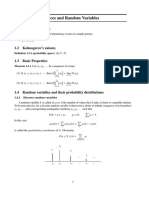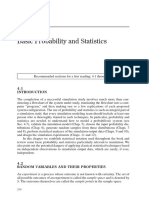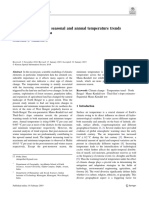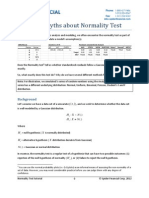0% found this document useful (0 votes)
58 views27 pagesReference: Mr. Richard Li DLSU Gokongwei College of Engineering
The document discusses key concepts related to random variables including:
1) Random variables can be discrete or continuous depending on whether they can take a finite or continuous set of values.
2) Probability distributions specify the probabilities associated with each value of a random variable and can be presented as tables or functions.
3) Key properties of probability distributions include their formulas, graphs, expected values, and how these differ between discrete and continuous cases.
Uploaded by
Gillian FeliciaCopyright
© © All Rights Reserved
We take content rights seriously. If you suspect this is your content, claim it here.
Available Formats
Download as PDF, TXT or read online on Scribd
0% found this document useful (0 votes)
58 views27 pagesReference: Mr. Richard Li DLSU Gokongwei College of Engineering
The document discusses key concepts related to random variables including:
1) Random variables can be discrete or continuous depending on whether they can take a finite or continuous set of values.
2) Probability distributions specify the probabilities associated with each value of a random variable and can be presented as tables or functions.
3) Key properties of probability distributions include their formulas, graphs, expected values, and how these differ between discrete and continuous cases.
Uploaded by
Gillian FeliciaCopyright
© © All Rights Reserved
We take content rights seriously. If you suspect this is your content, claim it here.
Available Formats
Download as PDF, TXT or read online on Scribd
/ 27
